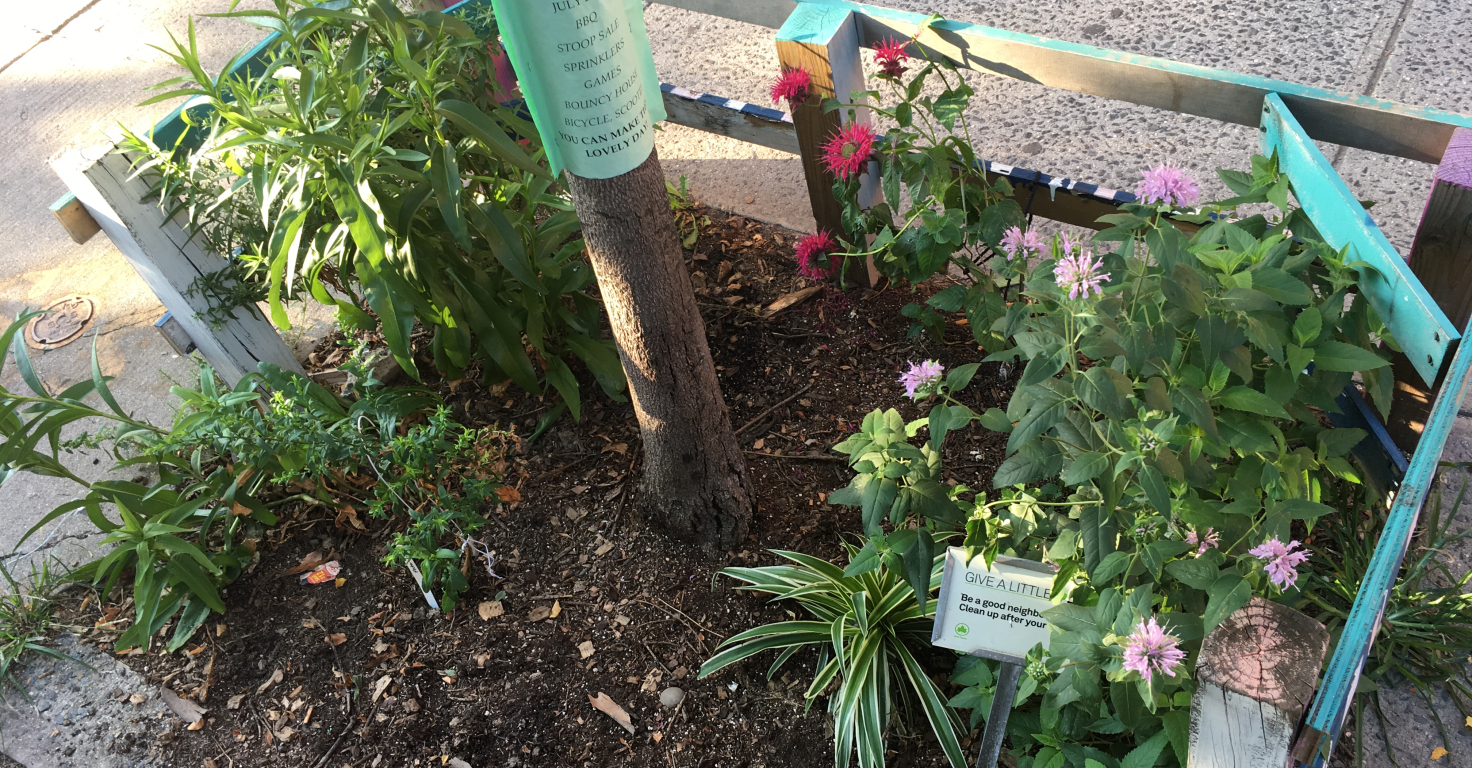Benefits of Trees to NYC
New York City’s trees shade us in the summer, beautify our neighborhoods, help reduce noise, and support important urban wildlife. Beyond these priceless benefits, our urban forest provides us a concrete return on the financial investment we put into it. Our publicly owned trees are as much of an asset to us as our streets, sewers, bridges, and public buildings. Using formulas from the USDA Forest Service’s i-Tree software, we present some of the concrete ecological benefits and related financial value to the City in the NYC Tree Map.
Stormwater Interception
Urban stormwater runoff is a major source of pollution entering wetlands, streams, lakes, and oceans. Healthy trees can reduce the amount of runoff and pollutants in receiving waters. The interception benefit is the amount of rainfall that does not reach the ground because it evaporates from the crown. As a result, the volume of runoff is reduced and the time of peak flow is delayed. Trees protect water quality by substantially reducing runoff during small rainfall events that are responsible for most pollutant washoff.
Energy Conservation
Trees save energy for heating and cooling by shading buildings, lowering summertime temperatures, and reducing windspeeds. Secondary benefits from energy conservation are reduced water consumption and reduced pollutant emissions by power plants.
Air Pollution Removal
Air pollution is a serious health threat to many city dwellers, causing asthma, coughing, headaches, respiratory and heart disease, and cancer. Urban forests provide six main air quality benefits:
- They absorb gaseous pollutants (e.g., O3, nitrogen dioxide [NO2], and sulfur dioxide [SO2]) through leaf surfaces.
- They intercept PM10 (e.g., dust, ash, pollen, smoke).
- They release oxygen through photosynthesis.
- They transpire water and shade surfaces, which lowers air temperatures, thereby reducing O3 levels.
- They reduce energy use, which reduces emissions of pollutants from power plants, including NO2, SO2, PM10, and volatile organic compounds (VOCs).
- They reduce evaporative hydrocarbon emissions and O3 formation by shading paved surfaces and parked cars.
Carbon Dioxide Storage
Note: The metric demonstrating the value of carbon dioxide storage is currently not being calculated. We are changing the formula on the NYC Tree Map to account for the inclusion of trees in our city’s parks. We hope to have the full value of our ecological benefits displayed again soon.
Global temperatures have increased since the late 19th century, with major warming periods from 1910 to 1945 and from 1976 to the present. Human activities, primarily fossil-fuel consumption, are adding greenhouse gases to the atmosphere. Urban forests have been recognized as important storage sites for carbon dioxide (CO2), the primary greenhouse gas. Urban forests can reduce atmospheric CO2 in two ways:
- Trees directly sequester CO2 in their stems and leaves while they grow.
- Trees near buildings can reduce the demand for heating and air conditioning, thereby reducing emissions associated with power production.
